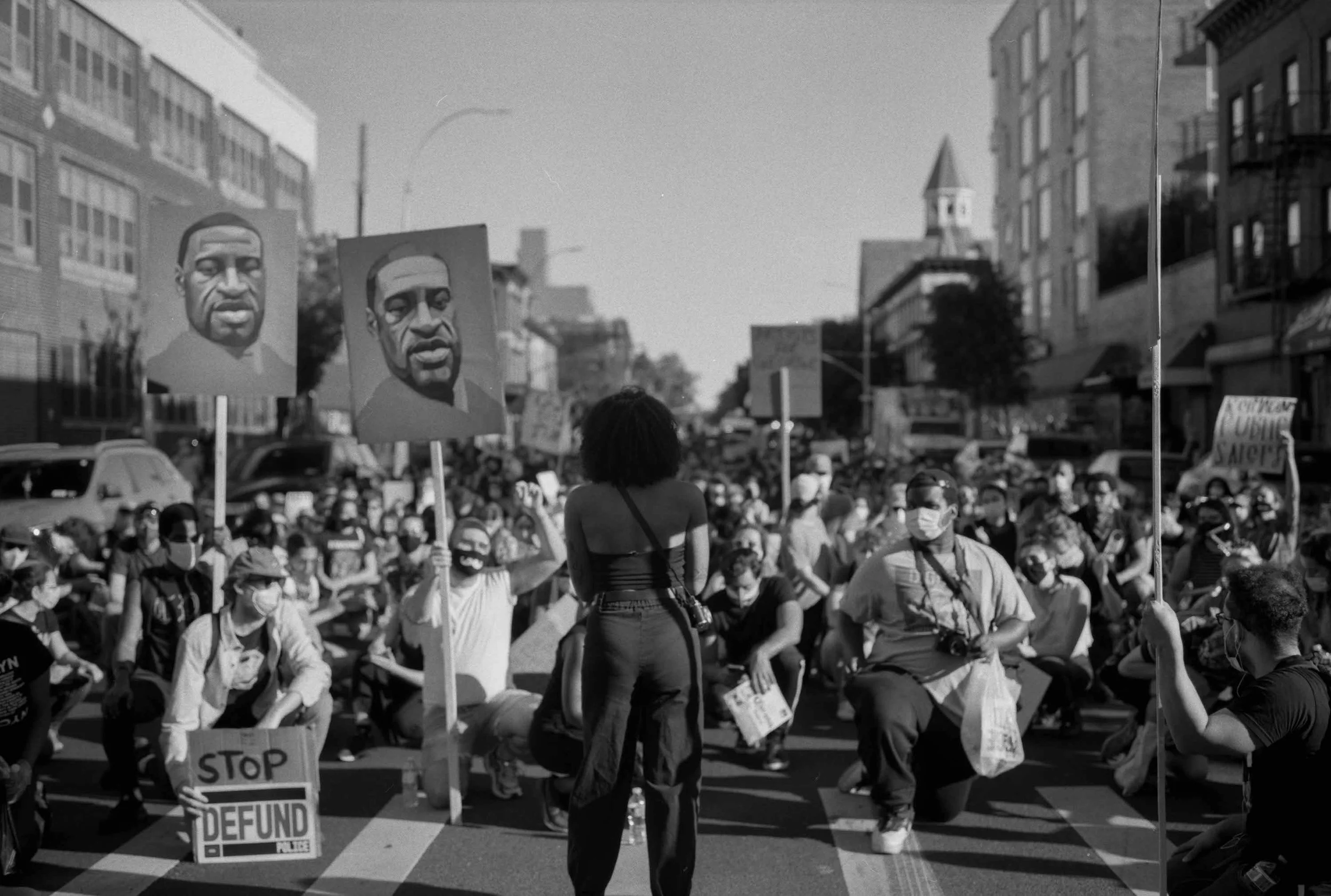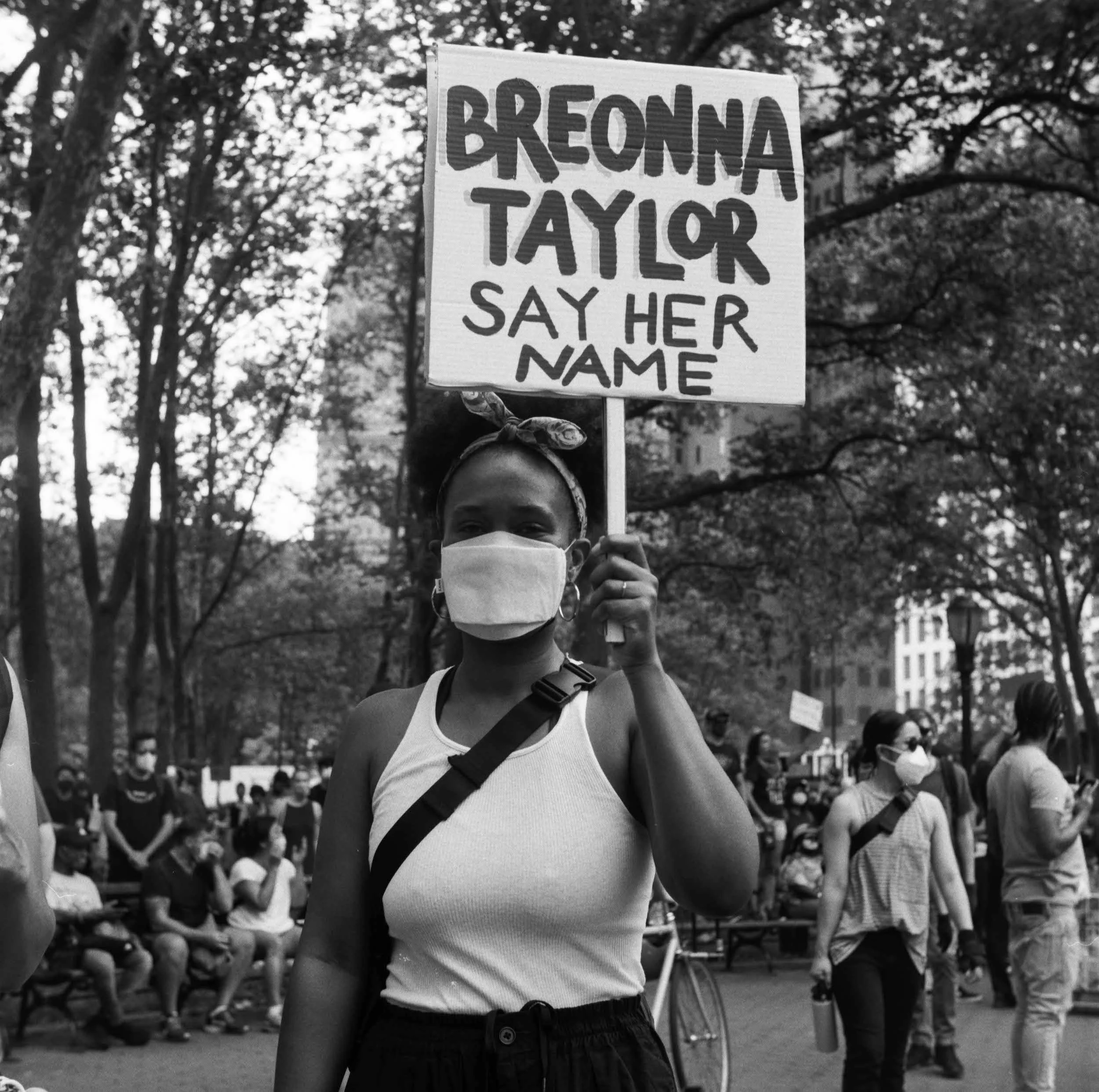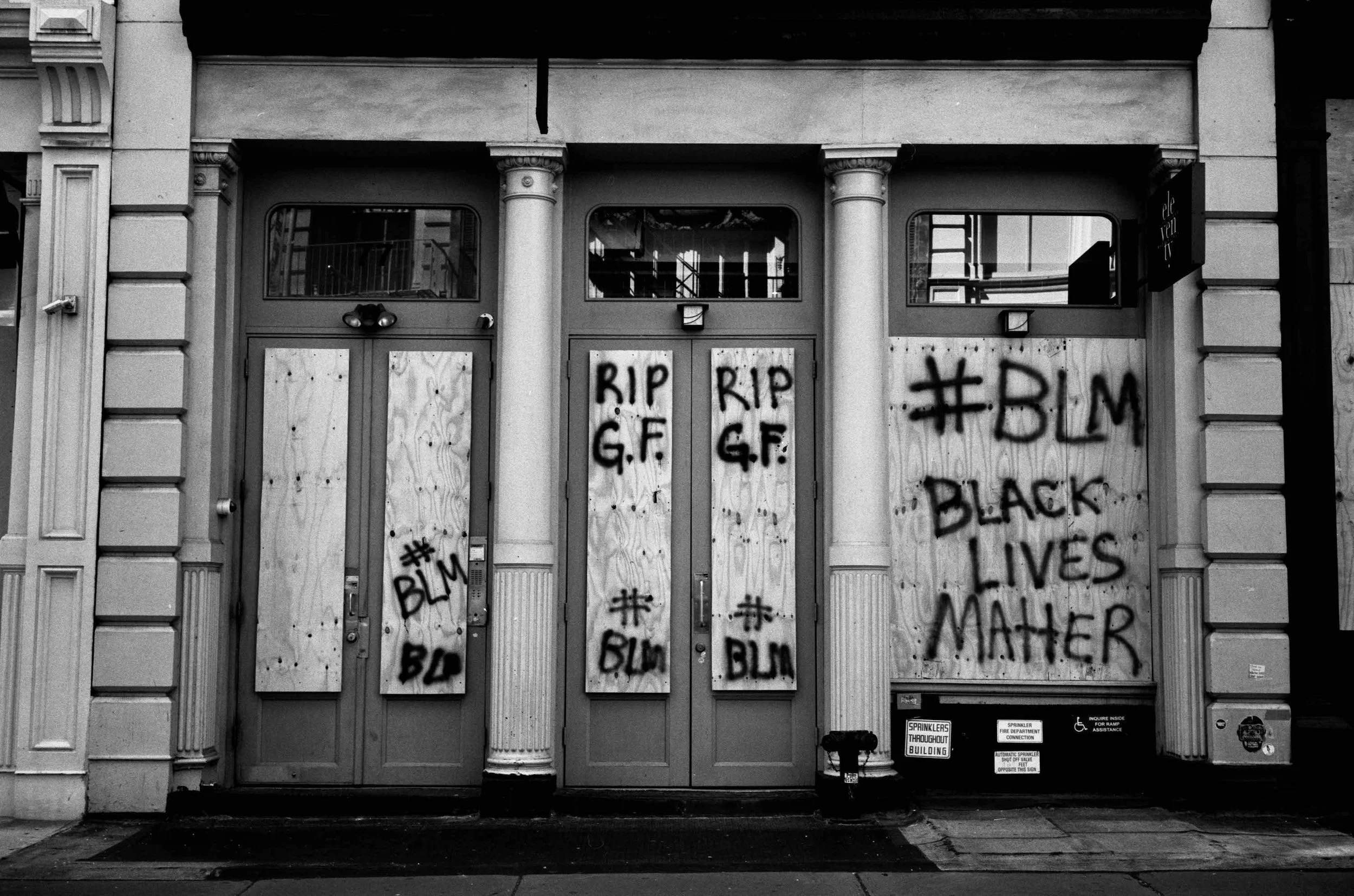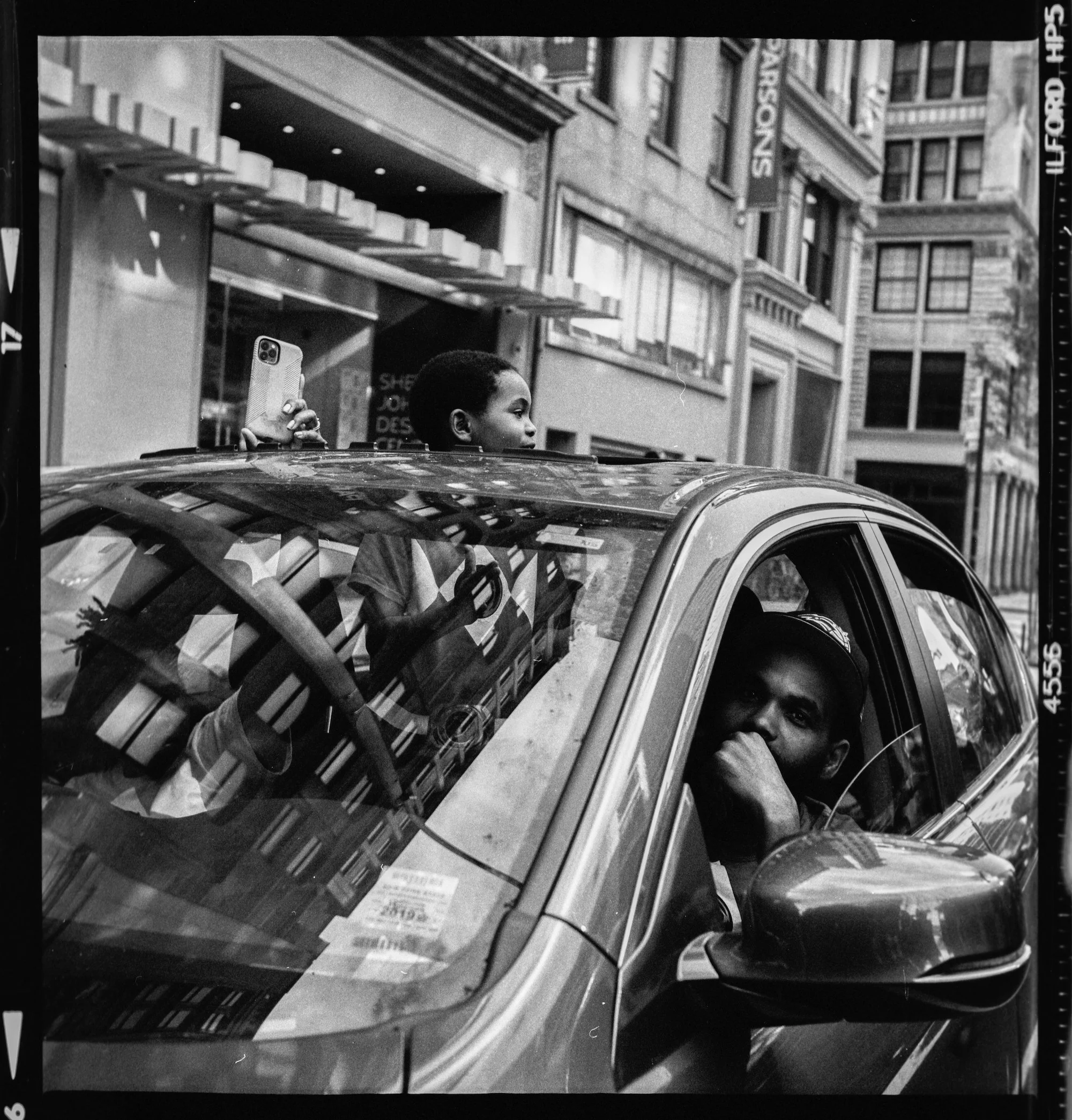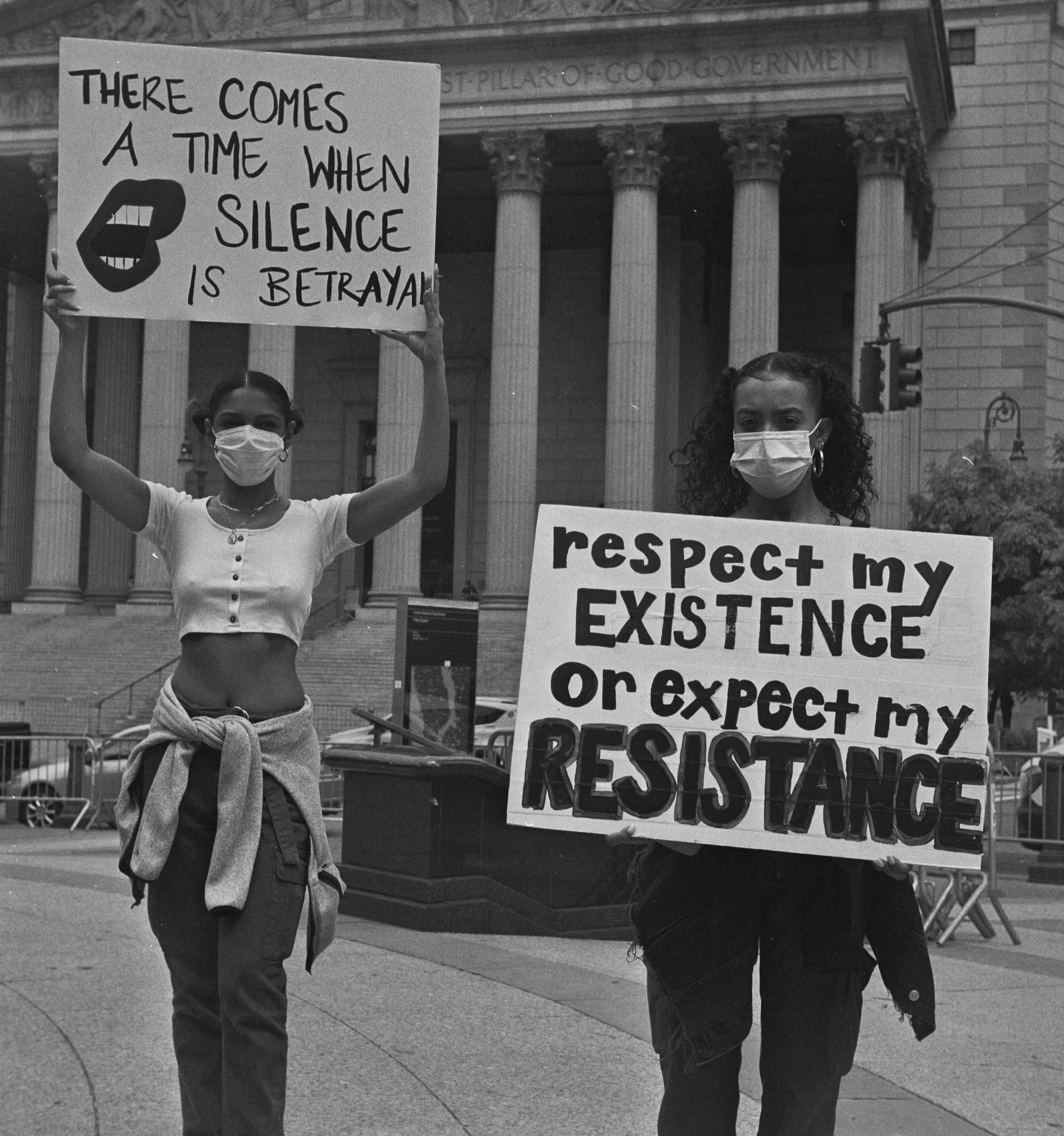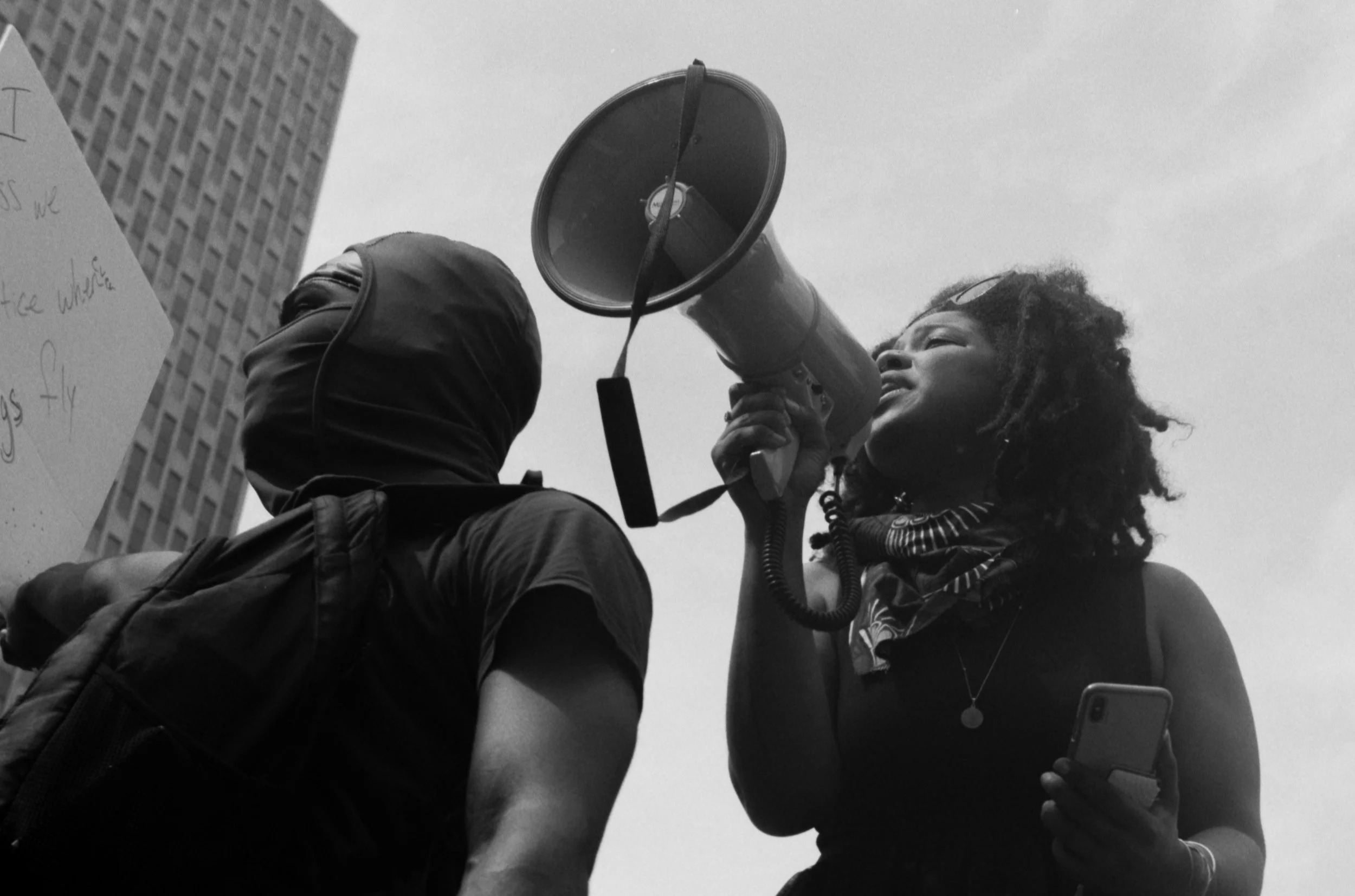Freedom Summer:An Interview with Naeem Douglas, the Brookladelphian
Photos by Naeem Douglass. Originally Printed in AphroChic magazine Issue 4, Summer 2020.
The summer of 2020 marks an incredible moment in history, seeing the birth of one of the largest civil rights movements the world has ever known. After years of what seemed like an endless cycle of Black death and white apathy, something new has happened. Cries of support for Black lives have begun to come from places that were once deathly silent as the terrifying immunity with which the police could kill Black people was proven over and over, one video at at time. The outrage of a community used to suffering alone has been felt by others and together they are beginning to stand up, not in one city or one nation, but all over the world.
The spirit of protest that promises to define this summer is about more than any one person or one community, and certainly more than one “bad apple.” This is about every community that has seen too many lost coming together to declare an end to a cen- turies-old system that will terrorize, oppress, and kill to ensure supremacy. It’s a constitutional right being asserted by people pushed too far by racist subjugation, economic exploitation, and gov- ernmental apathy, and who will no longer be silent.
No matter how many words we throw at this historic moment, they’ll all fail to capture it: the weary grief of people so tired of grieving that there’s nothing left to do but explode; the sudden awakening of those abruptly coming to realize that nothing costs more than privilege and struggling to figure out what to do about it; the optimism of seeing so many voices calling out together for change; and the fear and outrage of those who champion the status quo as they see it come crumbling down around them. When a thousand words won’t begin scratch the surface, there’s only one thing to do: take a picture.
AphroChic: What inspired you to go out and capture what’s been happening around Black Lives Matter in New York?
Naeem Douglas: The reaction to George Floyd’s death was unlike anything I’ve ever seen. It sounds absurd to say, but Black people dying at the hands of police is something this country has been okay with for a long time. This latest incident has seemed to wake up America. Black people aren’t the only ones upset. I wanted to document what was happening.
AC: With a deadly pandemic going on, were you concerned about going out to march?
ND: COVID-19 is definitely something I’m constantly thinking about. You probably can notice none of my photos are particularly close up. I try my best to stay out the fray but still take a photo. This is history in the streets and I felt compelled to document it. I COULD NOT STAY HOME.
AC: What was the spirit of the people that you saw marching like? What was your own spirit like?
ND: Good spirits, but you could also sense a bit of exhaustion from Black people. I think people really want police interactions with Black people to change. In the streets of New York City, there’s a lot of support for this movement. People honk their horns in support as the marches and protest move throughout New York City.
AC: Was there anything in particular that surprised you about this moment?
ND: I was certainly surprised by white people’s involvement. I covered many protests in the past going back to the Sean Bell protest. It’s mostly a Black affair. But I’ve seen so many white people involved in these recent protests. They’re not taking leadership roles but I’ve seen a few rallies that were 80% white.
AC: There have been many reports of police violence against protestors here in the city. Did you witness any violence as you captured this movement?
ND: I did see some on the first day. The very first day of the protests I happened to be in [Manhattan] and was riding my bike by Foley Square and saw a rally. I always have a camera with me so I started to make some photos. Then the marchers started moving north and the police were not having it. They were really aggressive and definitely initiated contact. It escalated fairly quickly.
It ended up being a little too much for me. So I broke off the march and tried to get myself situated. I was straddling my Citi Bike trying to put my phone away, load film in my camera and get a bearing on what was going on. I was about a block away from the protest. Suddenly I feel a tap on leg which turned into pounding. I looked up and saw a bicycle officer and he’s hitting my leg with his front wheel and yelling at me to move. It was so bizarre and unnerving. I was the only person on the street, between two parked cars and clearly just trying to put myself together. Before anything could really happen, his fellow officer pulled him away and he went back to the group.
AC: What role can photography play in amplifying movements?
ND: Photography is pivotal because one photograph can tell many stories. With video, you have a lot going on. However, a photograph is one moment in time. No sound, no music, and in my case no color (I mostly shoot black and white film). One moment and one subject can sum up years of frustration, ignorance, exhaustion, etc. The simplicity of it is powerful to me. I’m reminded of the photo from the late 1950s of a Black student walking to school in Arkansas and you see these white women and students behind her screaming insults at her. That one moment captured the vitriol of racism during that time and the struggle for us to be treated like humans.
AC: Which photographers have in- spired your work?
ND: I have to start with the greats, Gordon Parks and Jamel Shabazz. I would be remiss if I didn’t mention Ernest Withers, but his life as a FBI informant during the civil rights movement leaves me conflicted. I’m also a big fan of Andre Wagner, a Brooklyn-based photographer who’s doing in- credible work.
AC: Is there one moment or image that stands out in your mind?
ND: One is a man praying at The Barclays Center. He’s so peaceful in his prayer. It moved me in the moment and when I saw the photo later. The second photo is of a young Black woman leading a march through Brooklyn. It was inspiring to see her putting her voice to the rally, so it was particularly moving to see her and be able to document it.
AC: What do you hope will come out of this moment? Could we see real police reform, or something even bigger?
ND: I hope a real change comes from this. America has had a hard time facing its original sin (slavery) and the effects it continues to have. This country definitely needs to address it in a meaningful way.
